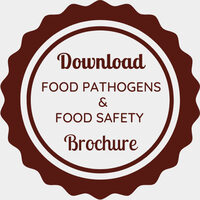Day 1 :
Keynote Forum
Prof. Marija Banožić
Faculty of Food Technology, University of Osijek, Croatia
Keynote: Effect of high voltage electric discharge on the extraction of phenolic compounds from mandarin (Citrus unishu M. var. okitsu) peel waste
Time : 10:30 AM

Biography:
Marija Banožić, MSc, PhD student at the Faculty of Food Technology in Osijek was born on 26 August 1992. She graduated in 2016 at the Faculty of Agriculture and Food Technology Mostar, Bosnia and Herzegovina and started working at the Faculty of Food Technology in 2018. She is part member of a group from the research project “Application of innovative techniques of the extraction of bioactive components from by-products of plant originâ€. Until now she has published 12 scientific papers and 3 book chapters.
Abstract:
 The objective of this study was efficient utilization and valorization of mandarin peel (Citrus unshiu M. var. Okitsu) using a green extraction technique and water as a solvent. Mandarin peel was subjected to a high voltage electric discharge (HVED) assisted extraction procedure under different experimental conditions: solvent:solid ratio (200, 300, 400 mL/g), frequency (40, 70, 100 Hz) and treatment time (5, 10, 15 min), in order to study the influence of these conditions on the extraction yield and content of phenolic compounds. Using high-performance liquid chromatography, 5 compounds have been identified and quantified, namely hesperidin (50.52-72.91 mg/g), narirutin (7.47-17.39 mg/g), rutin (1.36-5.25 mg/g), cryptochlorogenic acid (0.39-1.10 mg/g) and neochlorogenic acid (0.33-1.10 mg/g). The extraction yield was ranked from 359.5 to 463.2 mg/g showing a strong dependence on the applied process parameters. Moreover, using spectrophotometric assay, total phenol content (expressed as mg of gallic acid equivalents) and antiradical activity (expressed as % DPPH) were determined and were ranked from 96.23 to 275,46 mg GAE/g and from 87.06 to 94.93% respectively. These results clearly demonstrate that HVED treatments can enhance the extraction efficiency due to electrohydraulic discharge phenomena, including the emission of high-intensity UV light, the generation of shock waves, and the generation of free radicals produced by the photodissociation of water which can decrease particle size and influence fragmentation of cell membranes and intensify mass transfer and increase the release of intracellular compounds into the solvent.
Keynote Forum
Food Microbiology Conferences
Sessions of Food Pathogens and Safety Conference
Keynote: Food Microbiology Conferences
Time : 04:30 PM

Biography:
Food Microbiology Conference is one of the sessions in the Food Pathogen and Food Safety Conference scheduled in Vancouver, Canada on June 13-14, 2022. It is the study of the microorganisms that inhibit, create, or infect food. This includes the study of microorganisms causing food spoilage; pathogens that may cause disease (especially if food is improperly cooked or stored); microbes used to produce fermented foods such as cheese, yogurt, bread, beer, and wine; and microbes with other useful roles, such as producing probiotics.
Food microbiology conference provides in depth study of the microorganisms which spoils and contaminates the food. The diseases caused by food pathogens or the microorganism are mainly because of the food which is improperly cooked or stored. It cultivates microorganisms that have both useful and harmful impact on food quality and safety and may therefore be of concern to public health. Preparation of food, including proper cooking, kills most microorganisms which cause infections in the food. However, some toxins formed by contaminants may not be reason to convert into non-toxic forms by heating or cooking the contaminated food.
Food Microbiology Conference allows participant to present their research in various modes including poster, video, oral and provide an environment to organize the workshop and symposium for young researchers.
Subtopics of Food Microbiology Conference includes:
- Microbiology of fermented foods and beverages
- Food mycology
- Predictive microbiology
- Microbial aspects of food spoilage and quality
- Industrial microbiology
- Nutritional availability in foods
- Applications of indicator organisms
- Factors affecting the growth of food micro-organisms
- Adoption of biofilms in food
Abstract:
Food Microbiology Conference is one of the sessions in the Food Pathogen and Food Safety Conference scheduled in Vancouver, Canada on June 13-14, 2022. It is the study of the microorganisms that inhibit, create, or infect food. This includes the study of microorganisms causing food spoilage; pathogens that may cause disease (especially if food is improperly cooked or stored); microbes used to produce fermented foods such as cheese, yogurt, bread, beer, and wine; and microbes with other useful roles, such as producing probiotics.
Food microbiology conference provides in depth study of the microorganisms which spoils and contaminates the food. The diseases caused by food pathogens or the microorganism are mainly because of the food which is improperly cooked or stored. It cultivates microorganisms that have both useful and harmful impact on food quality and safety and may therefore be of concern to public health. Preparation of food, including proper cooking, kills most microorganisms which cause infections in the food. However, some toxins formed by contaminants may not be reason to convert into non-toxic forms by heating or cooking the contaminated food.
Food Microbiology Conference allows participant to present their research in various modes including poster, video, oral and provide an environment to organize the workshop and symposium for young researchers.
Subtopics of Food Microbiology Conference includes:
- Microbiology of fermented foods and beverages
- Food mycology
- Predictive microbiology
- Microbial aspects of food spoilage and quality
- Industrial microbiology
- Nutritional availability in foods
- Applications of indicator organisms
- Factors affecting the growth of food micro-organisms
- Adoption of biofilms in food
- Food Pathogens

